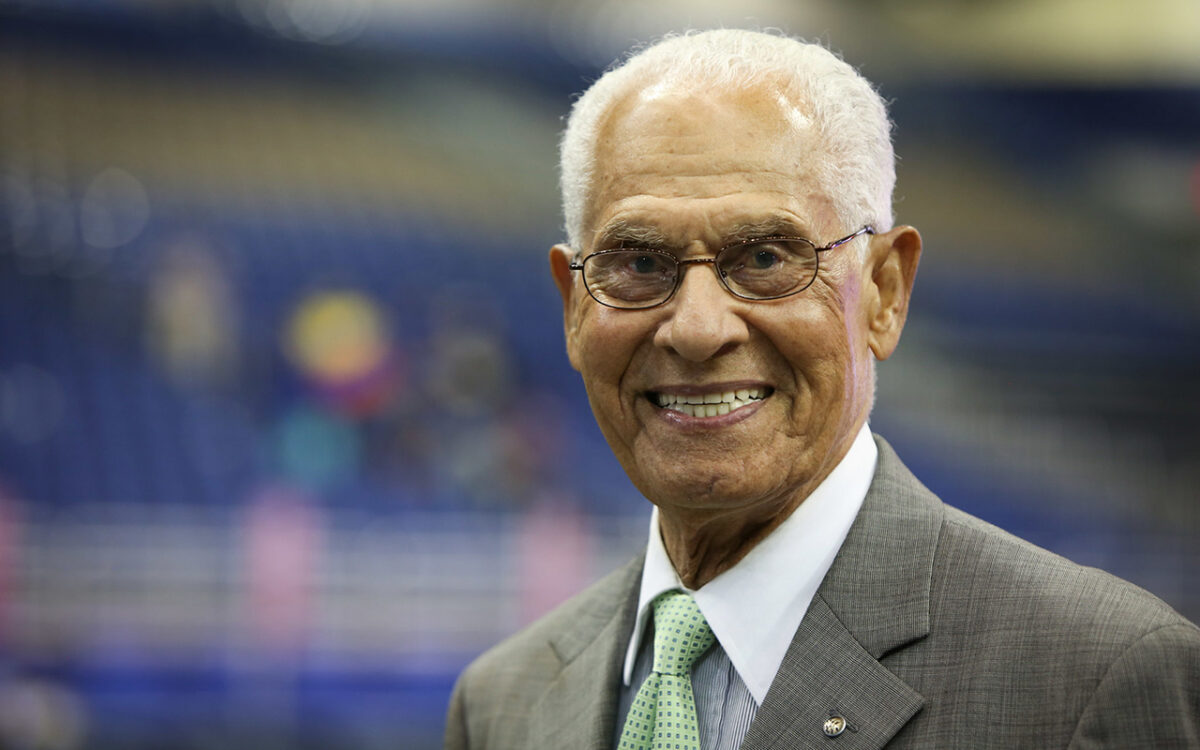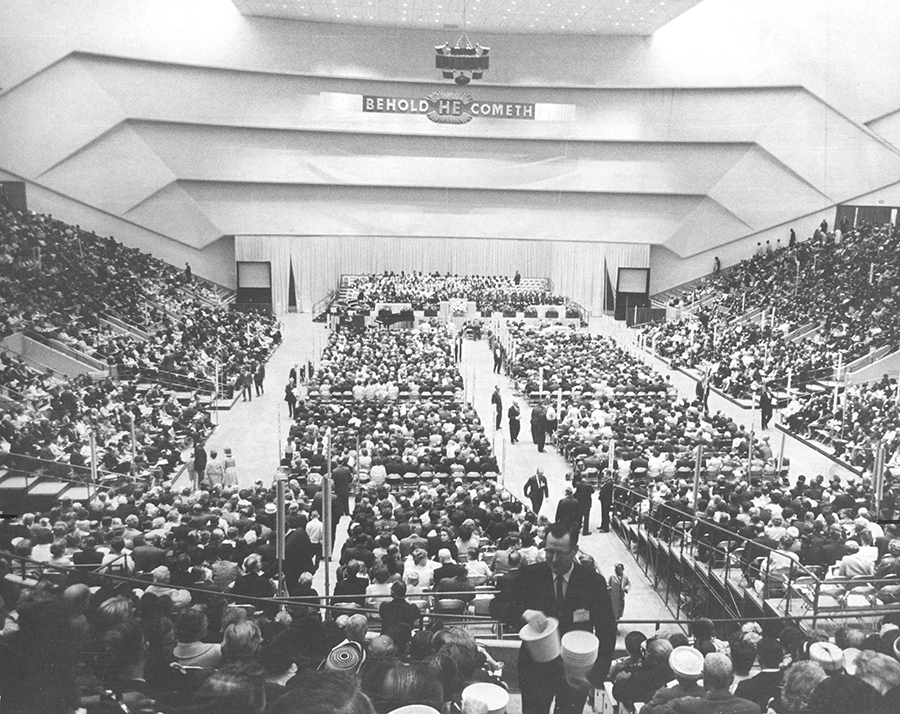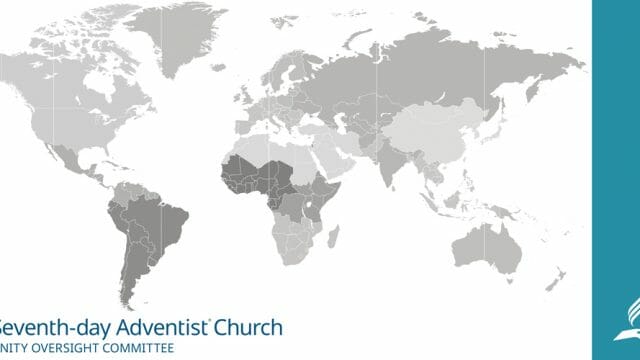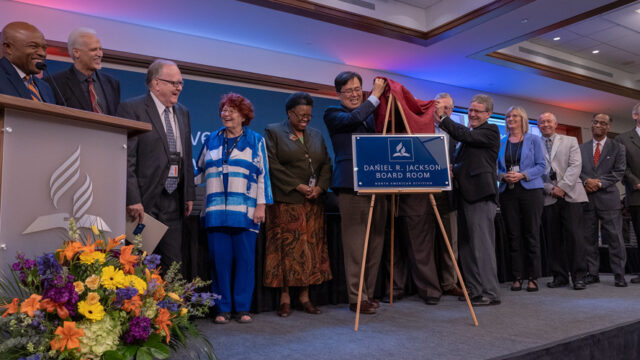Former Inter-American Division president George Brown reflects on being a church leader.

A former president of the Inter-American Division (IAD) of the Seventh-day Adventist Church, George W. Brown, recently reflected on General Conference (GC) Sessions past, the challenges the church in the division faced, its remarkable growth, and what made a difference in the multi-culture territory.
Considered a giant of IAD in the past half century, Brown is known to be one of a handful of leaders who shaped the course of the church territory into what it is today.
In 1966 Brown stepped into the General Conference Session in Detroit, Michigan, United States, at a time when GC Sessions were held every four years. At 42, he had recently been appointed president of Caribbean Union College in Trinidad, now University of the Southern Caribbean. Before that, he had served as church pastor, dean of men, youth ministry leader, and education director for the Caribbean Union Conference territory.
“There was a big crowd, and I was profoundly impressed to see how well the Adventist Church had been organized, its progress and achievement throughout the world,” Brown says. “I was very much impressed by what I witnessed there.” Robert H. Pierson was GC president at the time, and what Brown remembers the most was his utter surprise when someone from the nominating committee came to him for an interview to become the IAD youth director.
Forty-four years had passed since the IAD was officially organized in May 1922, at the GC Session in San Francisco, California, United States. The territory had seen a lot of growth throughout its regional territories in Mexico, Central America, the Caribbean islands, French-speaking territories, and the countries on the northern tip of South America.
Challenges at the Time
“There was a movement in some of the areas of our division wanting to fragment a little bit from the linguistic point of view, and that concerned me,” he says, “because Inter-America became what it was then because of the unity that had existed before.” Once Brown moved to work at the IAD offices in Coral Gables, Florida, he says, “I was hoping that we would get into a new era when there would be greater passion for remaining united as part of the world church.”
In 1975, Brown was appointed field secretary for the IAD under the leadership of Bender L. Archbold, the first person born in that region to become president, and who led the region to become the fastest growing and largest of the world divisions.
Under his new assignment, Brown had more contact with the administration, and he began to understand the importance of making sure every effort was made to keep the IAD united ethnically, linguistically, and spiritually.
The three main languages in IAD are still English, Spanish, and French.
“To think of the various languages, cultures of our division and yet remaining a solid example in evangelism and church growth meant a great deal to me, and I wanted to maintain that in the future,” he explains. Leaders began to create an atmosphere of oneness during committee meetings, which were held in different parts of the IAD territory to build mutual respect, he says. “The message was clear: ‘All welcomed, none more important than the other,’ ” he says.
Changes in the Right Direction
“I could feel there were changes in the right direction, but from the particular area from which this was brewing there was still some attempt to bring about some type of separation,” Brown explained. It was something Brown had to address more purposefully once he was elected as IAD president at the 1980 GC Session in Dallas, Texas.
“In our committee meetings, in any form of communication, during our visitations to the field, as well as the messages that were given, devotionals, and all activities, we had to convey that message of unity,” he says.

At the time, what was then known as the Lay Activities department launched the Festival of the Laity, a great program that helped unite people regardless of nationality or language, he says. It was the first Festival of the Laity ever heard of in the world church, and one that brought about amazing momentum among the laity to further spread the gospel, thanks to the visionary leadership of Sergio Moctezuma, Brown says.
Territory-wide events were held, like celebrating evangelists who had led 100 or more new believers to baptisms in one year, youth activities, and more. The goal was to emphasize the unity of the division. When that is done, he says, “you gradually develop a culture of oneness.”
Bringing about Unity
“Everything we did was to bring about the necessary cohesion to keep the division united. It was intentionally done,” he says. Yet you can intentionally do something but at the same time create a problem, Brown says. “We had to be very wise, very tactful in all our approaches, so that people, our leaders would learn the value of remaining united.” It took a lot of creativity, prayer, and dialoguing, he adds.
Under Brown’s leadership from 1980 to 1993, the IAD was the first to reach 100,000 baptisms in a year, something that continued year after year. When Brown retired in 1993, the IAD had more than 1.5 million members.
“I was very pleased because when the time came for me to retire in 1993, I was greatly blessed to see the united force of workers that we had in our division,” Brown says.
One People, One Message, One Hope
Today, the very name Inter-American Division is pregnant with meaning, he says. “It had so much to do with a united force and evangelism, in education and in every aspect of the church: one division, one people, one message, one hope, united in that great world mission of sharing the gospel.”
Session after session he’s attended — the 2022 GC Session is his 12th— he has been impressed by the greatness and blessings of God, and a lot of changes to the constitution and bylaws that have favored the growth of the church around the world.
This year, Brown, as an IAD delegate, has been watching with his wife, Carla, and voting from his home in Florida. “We are richly blessed with the technology that has allowed us to accomplish so much even during this terrible period of the pandemic,” he says. For Seventh-day Adventists, the benefits of technology have been a great blessing, but at the same time “we must remember it is not technology that will finish the mission, but people who are fully committed and empowered by the Holy Spirit united to finish the work.”
At 98 years old, Brown says he has no illusions that he’s going to be around for another GC Session but remains prayerful that the church will continue with a sound biblical emphasis, united and ready for Jesus’ soon return.
The original version of this story was posted on the Inter-American Division news site.








